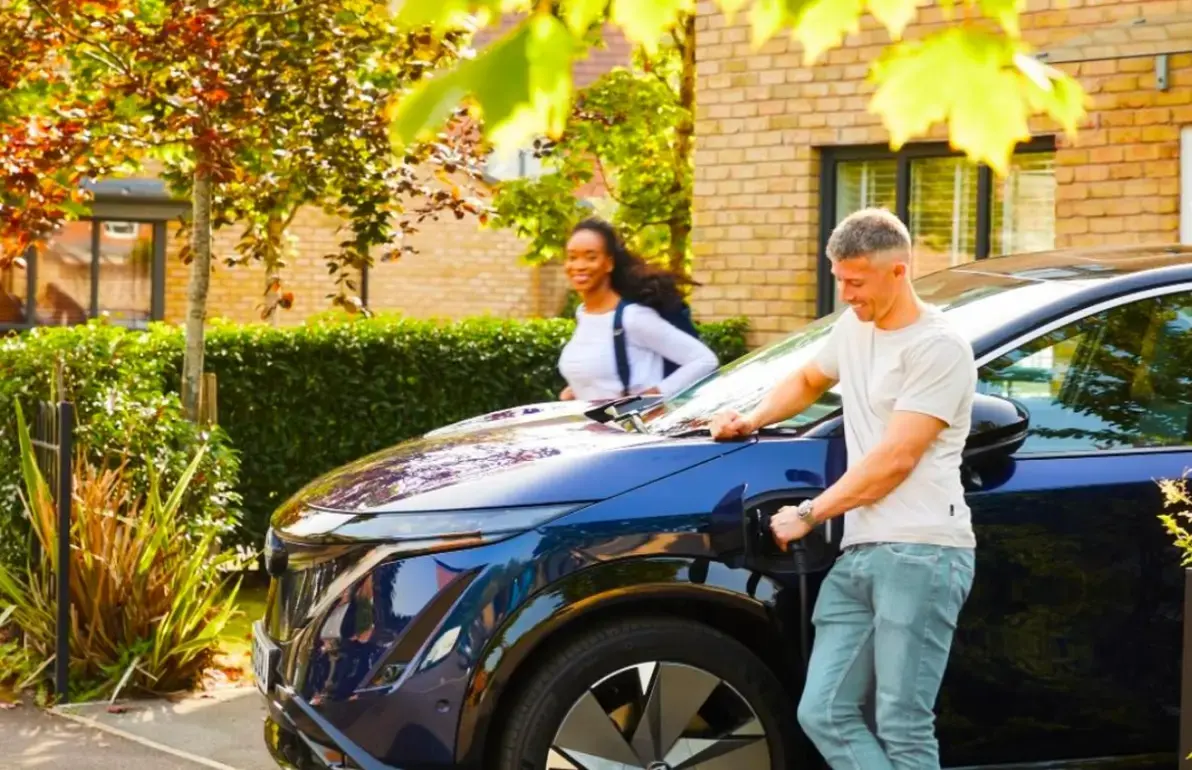- Carmoola
- Blog
- Tips and Advice
- Should I buy a Category S car?
- 🗞 Tips and Advice
- Last updated: Feb 11, 2022
- 8 Min Read
Should I buy a Category S car?
Written by

Verified by


See how much you can borrow in 60 seconds
| Representative Example | |
|---|---|
| Loan amount | £10,000 |
| Interest rate | 13.9% APR |
| 54 payments of | £246 |
| Total cost of credit | £3,284 |
| Option to purchase fee | £1 |
| Total payable | £13,285 |
If you’re looking to save money, it might be worth taking a chance on a Category S car. Buying a write-off can be budget-friendly, but it’s also a gamble.
While you might think written off cars can only be found in the scrap yard, there are damaged models that can be legally repaired and put back on the road. In some cases, you could find an older car that’s only been slightly damaged has ended up as a write-off as the cost of repairs aren’t worth the insurer’s investment.
Category A and B cars are severely damaged and shouldn’t be offered for sale, but you might come across models that can be made safe labelled as Category C, D, N, or S.
If you’re thinking about taking on the risk of a Category S write-off, we’re here to help you understand the potential costs and benefits.
Got a specific question in mind? Why not skip ahead:
- What does Category S mean?
- What damage will a Category S car have?
- What are the ‘write-off’ categories?
- Why wouldn't an insurer have a Category S car repaired?
- Is a Category S car safe to drive?
- Should I buy a Category S car?
- Can you insure a Category S car?
What does Category S mean?
The S in a Category or Cat S car stands for structural, which means that the car has incurred damage to its structural parts like its frame or chassis.
Unfortunately, this means a car in this category could need more extensive repairs than a Cat N car with non-structural damage but whether it’s worth making those repairs will depend on the level of damage, the car’s age, and its resale value.
What damage will a Category S car have?
A Cat S car will have incurred structural damage, but how badly its frame or chassis has been affected will vary from model to model.
Cars in this category could have a bent chassis, a creased door frame, damaged crumple zones, issues with the bumpers and wing supports, or problems with the suspension.
What are the ‘write-off’ categories?
In the UK, there are four write-off categories to know:
Cat A
These cars are severely damaged and must not be repaired and returned to the road.
Cat B
Like Cat A, these cars will also be extremely badly damaged and should be crushed, but they might have some usable parts that can be recycled for use in other vehicles.
Cat S
These are cars that have sustained some structural damage, but if repaired, could be made safe to drive on the road.
Cat N
These cars can also be repaired to be made roadworthy but will have sustained some non-structural damage.
Before 2017, Cat C and Cat D were used instead of Cat S and Cat N. While these categories share similarities with their replacements, the big difference with Cat C and D is that they focus on repair costs rather than whether the damage is structural. The cost of repairs for Cat C cars will usually be more than the car’s value. Cat D cars can be repaired but it will cost more than 50% of the vehicle’s value.
Why wouldn't an insurer have a Category S car repaired?
Money talks. When assessing the damage on a Category S car, the insurer will consider how much the repairs are likely to cost and compare that figure to how much the car is worth.
They’ll look at the total cost of repair as well as how difficult it might be to source parts and cover the cost of offering you a hire car while yours is being repaired.
If the insurer calculates these costs represent a high percentage of the car’s overall value, they’ll likely deem it too expensive and write it off as a Cat S instead.
Is a Category S car safe to drive?
While Cat S cars are unsafe before their structural damage has been repaired, they can be made roadworthy again.
If you can find a trusted mechanic to carry out the repairs to a high standard, there’s no reason why you won’t be able to end up with a car that’s safe to drive.
This doesn’t mean you won’t run into problems further down the road. While the damage reported might be structural, the car could have issues hidden under the hood that aren’t so easy to spot. Make sure the mechanic checks over the entire car thoroughly before declaring it’s ready to drive on public roads again.
Should I buy a Category S car?
Buying a Cat S car has advantages and disadvantages, and with your safety potentially at risk, it’s important to weigh these up carefully.
You might be able to get a great deal by choosing a car in this category, especially if you have a mechanic in the family or feel confident to carry out repairs yourself. However, structural damage can be expensive and take time to restore to a high enough standard to ensure you’ll be safe on the road.
When deciding whether to buy a Cat S car, make sure you understand the extent of the damage and ask to take it for a test drive before making an offer. If it’s already been repaired, you might still want to take it to a professional mechanic for a second opinion to ensure everything is in good order. It may also be worth making an application with an insurance comparison site to get an idea of how much it might cost to insure.
Can you insure a Category S car?
A Cat S car represents a risk, which might make it harder to find insurance. While you can get the car repaired so that it’s safe to go back on the road, the insurer can’t be certain that it’s been fixed to a very high standard and that new problems won’t emerge in time.
Unfortunately, this means that some insurers will refuse to offer cover to a write-off and others will charge a higher premium to reflect the added risk.
FAQs about Category S cars
When were the new write-off categories introduced?
In October 2017, the write-off categories were revised to offer more information on the type of damage cars in each category have sustained.
Cat A and B remained the same, but Cat C became Cat S (to show the car’s sustained structural damage), and Cat D became Cat N (non-structural damage).
However, cars written-off before 2017 didn’t switch category so you might still find older cars on the market listed as a Cat C or Cat D.
Is it worth buying a Category S car?
Buying a Cat S car is all about weighing up the risk and potential reward.
If you feel confident about making repairs – or have a mechanic in the family who can help you out for free – you might be happy to take on a write-off as a project. You’ll likely save on its purchase price and, once it’s been fixed, you could enjoy many years with it on the road.
However, write-offs are always risky. Repairs might not stick, and new issues can emerge that could make the car unsafe later. You may also have to invest a lot of time and money to get it back in working order. Insurance costs will likely also be higher if you choose to go down this route.
Buying a Cat S car isn’t a decision to take likely, consider all the pros and cons before taking the plunge.
Can a Category S status be removed?
Write-off status can’t be removed: once a car has been written off and placed in a category, it will keep that status throughout the rest of its life. Even if you’ve invested the time and money to repair any issues, your car will still be classed as Cat S.
Is it illegal to sell a Cat S car?
See how much you can borrow in 60 seconds
| Representative Example | |
|---|---|
| Loan amount | £10,000 |
| Interest rate | 13.9% APR |
| 54 payments of | £246 |
| Total cost of credit | £3,284 |
| Option to purchase fee | £1 |
| Total payable | £13,285 |
Related articles
What Are the Top 5 Used Car Websites in the UK?
Thanks to the internet, searching for a used car in the UK is easier than ever before. You can simply head online, visit a used...
What Is GMFV in PCP Car Finance? Guaranteed Minimum Future Value Explained
GMFV, or Guaranteed Minimum Future Value, is the amount your lender estimates your car will be worth at the end of your PCP...
Does Financing a Car Build Your Credit?
Financing a car can build credit when you make payments on time, but it can damage your score if you miss payments or take on...

.webp?width=832&height=592&name=customer-support%20(1).webp)










.webp?width=400&height=285&name=online-shoppers-with-dog%20(1).webp)


.jpg?width=500&height=356&name=Vintage%20car%20going%20to%20an%20old%20town-1%20(1).jpg)





